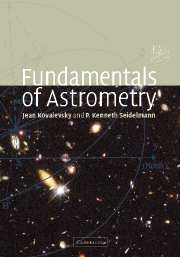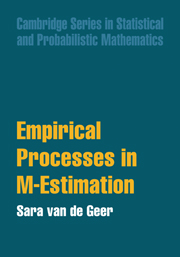Refine listing
Actions for selected content:
16950 results
References
-
- Book:
- Using SI Units in Astronomy
- Published online:
- 05 December 2011
- Print publication:
- 01 December 2011, pp 219-225
-
- Chapter
- Export citation
Preface
-
- Book:
- Using SI Units in Astronomy
- Published online:
- 05 December 2011
- Print publication:
- 01 December 2011, pp ix-xi
-
- Chapter
- Export citation
1 - Introduction
-
- Book:
- Using SI Units in Astronomy
- Published online:
- 05 December 2011
- Print publication:
- 01 December 2011, pp 1-11
-
- Chapter
- Export citation
Frontmatter
-
- Book:
- Using SI Units in Astronomy
- Published online:
- 05 December 2011
- Print publication:
- 01 December 2011, pp i-iv
-
- Chapter
- Export citation
10 - Unit of electric current (ampere)
-
- Book:
- Using SI Units in Astronomy
- Published online:
- 05 December 2011
- Print publication:
- 01 December 2011, pp 174-196
-
- Chapter
- Export citation
9 - Unit of thermodynamic temperature (kelvin)
-
- Book:
- Using SI Units in Astronomy
- Published online:
- 05 December 2011
- Print publication:
- 01 December 2011, pp 146-173
-
- Chapter
- Export citation
7 - Unit of mass (kilogram)
-
- Book:
- Using SI Units in Astronomy
- Published online:
- 05 December 2011
- Print publication:
- 01 December 2011, pp 92-112
-
- Chapter
- Export citation
12 - Astronomical taxonomy
-
- Book:
- Using SI Units in Astronomy
- Published online:
- 05 December 2011
- Print publication:
- 01 December 2011, pp 206-218
-
- Chapter
- Export citation
5 - Unit of time (second)
-
- Book:
- Using SI Units in Astronomy
- Published online:
- 05 December 2011
- Print publication:
- 01 December 2011, pp 54-71
-
- Chapter
- Export citation
11 - Unit of amount of substance (mole)
-
- Book:
- Using SI Units in Astronomy
- Published online:
- 05 December 2011
- Print publication:
- 01 December 2011, pp 197-205
-
- Chapter
- Export citation
Index
-
- Book:
- Using SI Units in Astronomy
- Published online:
- 05 December 2011
- Print publication:
- 01 December 2011, pp 226-230
-
- Chapter
- Export citation
Acknowledgements
-
- Book:
- Using SI Units in Astronomy
- Published online:
- 05 December 2011
- Print publication:
- 01 December 2011, pp xii-xiv
-
- Chapter
- Export citation
4 - Unit of angular measure (radian)
-
- Book:
- Using SI Units in Astronomy
- Published online:
- 05 December 2011
- Print publication:
- 01 December 2011, pp 30-53
-
- Chapter
- Export citation
2 - An introduction to SI units
-
- Book:
- Using SI Units in Astronomy
- Published online:
- 05 December 2011
- Print publication:
- 01 December 2011, pp 12-23
-
- Chapter
- Export citation
3 - Dimensional analysis
-
- Book:
- Using SI Units in Astronomy
- Published online:
- 05 December 2011
- Print publication:
- 01 December 2011, pp 24-29
-
- Chapter
- Export citation
8 - Unit of luminous intensity (candela)
-
- Book:
- Using SI Units in Astronomy
- Published online:
- 05 December 2011
- Print publication:
- 01 December 2011, pp 113-145
-
- Chapter
- Export citation
6 - Unit of length (metre)
-
- Book:
- Using SI Units in Astronomy
- Published online:
- 05 December 2011
- Print publication:
- 01 December 2011, pp 72-91
-
- Chapter
- Export citation
Contents
-
- Book:
- Using SI Units in Astronomy
- Published online:
- 05 December 2011
- Print publication:
- 01 December 2011, pp v-viii
-
- Chapter
- Export citation

Fundamentals of Astrometry
-
- Published online:
- 05 November 2011
- Print publication:
- 03 June 2004

Eddington
- The Most Distinguished Astrophysicist of his Time
-
- Published online:
- 05 November 2011
- Print publication:
- 24 November 1983
